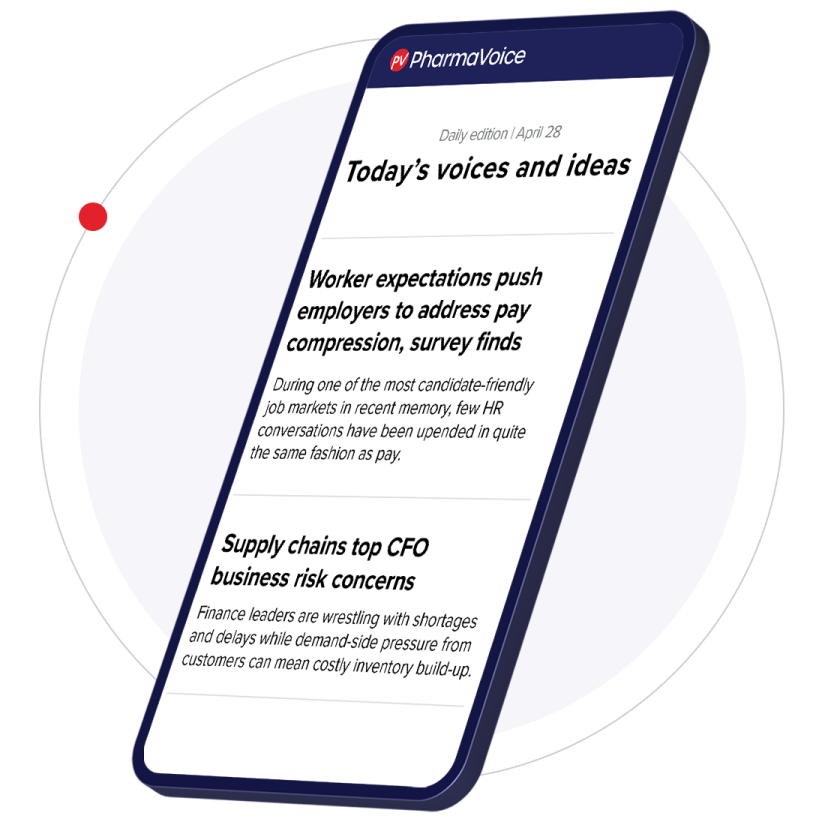The cardiovascular space is filled with some of the biggest pharma and biotech players in the world. Not only did the weight loss phenomenon Wegovy score a cardiovascular indication last year, but giants like Merck & Co. are making moves, too.
Merck anticipates its cardiometabolic pipeline will yield up to seven approvals by 2030, leading to peak revenue potential of more than $15 billion by the mid-2030s, the company told PharmaVoice. In addition, Merck scored an FDA nod in March with the breakthrough biologic Winrevair, a first-in-class treatment for pulmonary arterial hypertension, and the company is moving swiftly to expand the label further.
“This is an exciting time in cardiovascular disease,” said Dr. Sandeep Kulkarni, CEO and co-founder of Tourmaline Bio, a late-stage clinical biotech developing immune and inflammatory disease medicines.

Its lead asset, pacibekitug, which it licensed from Pfizer, is being studied in three indications, including atherosclerotic cardiovascular disease. Topline data from a phase 2 study are expected to read out in the second quarter of 2025.
“The data for the GLP-1 agonists — semaglutide, tirzepatide — is really quite remarkable,” Kulkarni said. “Not just the impact on weight loss but on … cardiovascular outcomes.”
With such heavy-hitters on the scene, how can a smaller, clinical-stage company make a dent in the market? By carving out an untapped space and using GLP-1 data as a way to de-risk their own program, according to Kulkarni.
‘Uncharted territory’ in the cardio space
Pacibekitug is an antibody that inhibits the immune and inflammatory disease driver interleukin-6 and belongs to a class of drugs that have been approved for years to treat autoimmune diseases like rheumatoid arthritis.
Now, Tourmaline is betting that pacibekitug can also target inflammation to reduce cardiovascular disease. Kulkarni said the company is targeting a “brand new pillar of cardiovascular disease risk.”
“We view the success of the GLP-1s as de-risking what we are doing."

Dr. Sandeep Kulkarni
CEO, co-founder, Tourmaline Bio
“This is really uncharted territory,” he said, adding there’s “a ton of white space here that is primed to be tapped.”
Working in “uncharted territory” doesn’t mean there isn’t competition brewing, though. Novo Nordisk is currently testing its own IL-6 inhibitor ziltivekimab in several cardiac indications, including in a phase 3 trial for atherosclerotic cardiovascular disease.
However, Kulkarni believes pacibekitug has an edge because of how it’s administered. While ziltivekimab is given via monthly subcutaneous injection, pacibekitug can be administered less frequently.
“Our drug has already been shown in earlier studies that it can be given every two months, and we think modeling supports going out to every-quarter dosing, which is what we’re testing in our phase 2 study,” Kulkarni said. “The long-dosing interval, we think, is an advantage in cardiovascular disease … we think that could translate to better adherence to treatment and better real-world outcomes.”
In addition, Kulkarni believes that other research, which suggests GLP-1s could have a heart-benefiting anti-inflammatory effect, bolsters the strength of their program’s findings.
“We view the success of the GLP-1s as de-risking what we are doing,” Kulkarni said. “If a partial inhibitor of inflammation can drive benefit, we think a more potent inhibitor of the right pathway … could potentially drive bigger benefit.”
A space of its own
While it may appear that Tourmaline’s pacibekitug would be poised to directly compete with the likes of Wegovy, Kulkarni doesn’t believe that’s the case. Although he said GLP-1s may have a “partial” anti-inflammatory mechanism, it’s not “the majority of their story compared to a drug like ours, which very much does inhibit inflammation.”
“We don’t view them as being competitors,” he said.
Instead, he envisions a scenario in the next decade or so when physicians use biomarkers to “tailor the treatment based on what is driving that patient’s residual risk,” whether it’s inflammation, high lipid levels or other indicators.
“We think the segmentation is going to work very much based on what is the risk factor that is likely presenting the patient with the most risk,” he said.
In addition to the anticipated phase 2 readout within the next couple of months, Kulkarni said Tourmaline is looking to target inflammation in other cardiovascular indications, including abdominal aortic aneurysm.
In the meantime, Tourmaline believes their drug will effectively and conveniently treat patients who have a high risk of heart attack and stroke.
“We have a drug that can drive down that risk and can be easily given without a ton of patient burden [and] can be safely given,” Kulkarni said. “We think there’s a compelling pitch.”


















